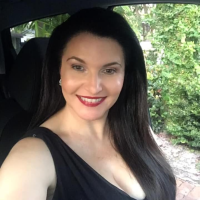The View From Here (23-07)

“Be an advocate for the people and causes important to you, using the most powerful tool only you have – your personal stories.” – John Capecci, author of Living Proof, Telling Your Story to Make a Difference
When Debbie and Matt Dietz asked me to write an article for the DIG newsletter, years ago, I thought it would be a great way to just share my story with others. Newly injured, new to being a wheelchair user and especially new to the spinal cord injury and hydrocephalus survivors’ community, I felt, at the time, a huge sense of responsibility when writing that first article for the newsletter. How I told my story and how I represented our community became very important to me and I wanted to get it right. For myself and for others. I ultimately titled my article, “The View from Here” as a sort of play on words. My view as a wheelchair user had changed physically because I was now seated all of the time and no longer standing, but my view on life in general had also significantly changed more than ever as a person now living with a disability.
While I wrote that first article to share my story and help myself become more open about my disability, I began to write more and more articles and my “View From Here” became a reoccurring feature in the newsletter. I began to realize that telling my story, sharing my journey was more than just helping me. Writing about these day-to-day experiences I faced as a person new to living with a disability was making an impact on those living with AND without a disability. Simply telling my story of how I was living my new life in a wheelchair, and now with a walker and a cane, brought to light many of the difficulties we in the disability community face every day. I began to receive comments and feedback from our readers on how my articles were impacting their lives. I realized I was making a difference. The responsibility I now feel, as I continue to share my journey as a person living with a disability, is greater than ever.
I shared my feelings on this with Debbie one day during a meeting, and she said something very profound. She told me, “That is the difference between self-advocating and advocating for others.” And now I get it. Advocacy can take many shapes and forms. Many get involved in groups, many protest, many strive to make changes in policy. For me, I’ve been able to become an advocate for those living with disabilities by telling my story.
“Never doubt that a small group of thoughtful, committed citizens can change the world. Indeed, it’s the only thing that ever has.” – Margaret Mead, American cultural anthropologist













